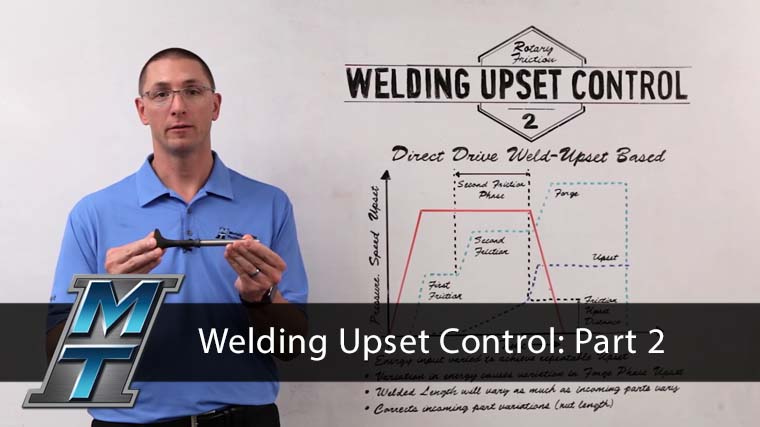
In Part One of this series, we talked about how upset is the amount of shortening of a part resulting from friction welding. Remember, if we had perfect incoming parts then we could fix the amount of energy used to make that weld, and get very repeatable upset. However, incoming parts variations such as area differences, surface conditions, material differences, or even interface “squareness” can cause subtle variations in upset.
Controlling by Upset Amount
Let’s take a look at direct drive friction welding, where we can change our control technique to affect upset. Instead of holding our rotation – which is the energy input phase – for a specific amount of time, we can instead hold our rotation until we get a specific amount of upset.
Parts. Parts. Parts.
Now let’s see how this affects the parts being joined. As we’ve discussed, there can be differences in the parts you are friction welding. If there are area differences on the face of the part, the larger part will spend more time rotating and creating more heat in order to get the same amount of upset we’re targeting. This process allows the energy to vary in order to overcome any variations in the incoming parts.
Repeatability and Variation
As a result of that varying energy there will be slight variations in the amount of upset that occurs in the forge phase of the weld. There can also be variations as a result of the braking phase as well.
The process is closed loop – meaning you’re getting the necessary feedback as the welding operation proceeds – on upset control up until it goes into the braking phase. But don’t forget, once the process enters the forge phase, it is then in open loop and there will still be a little bit of variation.
What’s good about this process is the fact that, though we’re still not controlling the overall length of the part, we can still get better upset repeatability – in spite of any incoming part variations.
MTI Can Solve Your Problems
Our expert engineers have a deep understanding of the friction welding processes and the wide variety of materials that can be used. We know how to achieve the maximum utilization of each material to ensure you get the highest quality parts that are perfectly catered to your applications. We’ll build a machine that makes your part, we’ll make the part for you, or we’ll help you make the part even better.
 MTI UK
MTI UK  FWT
FWT